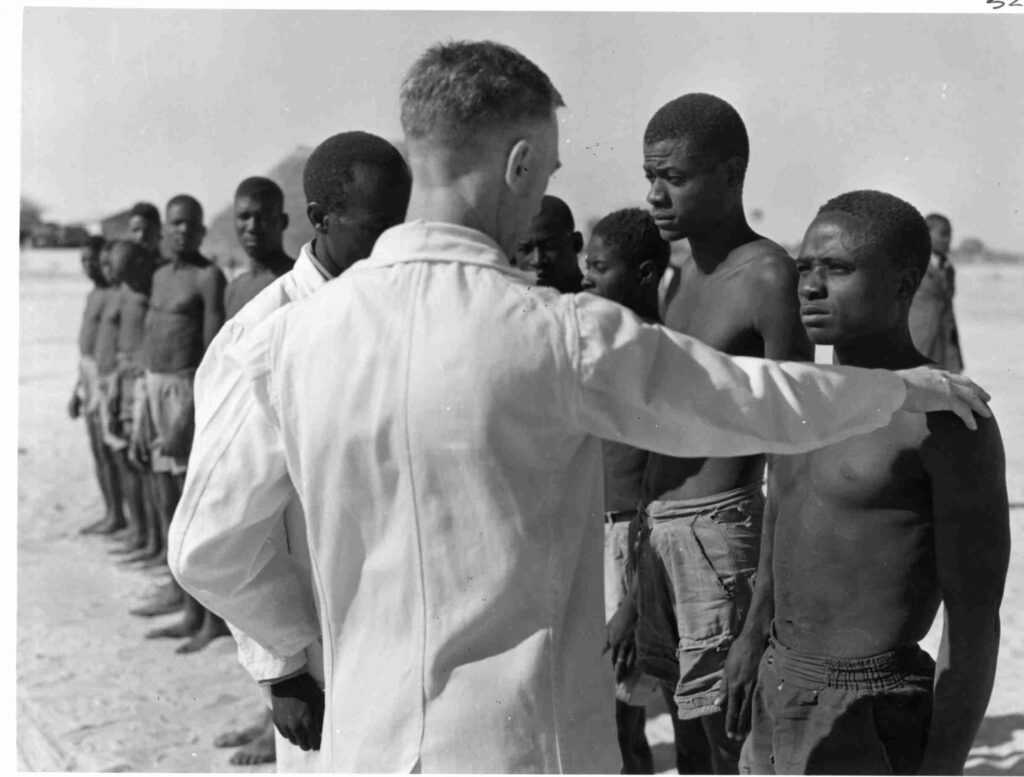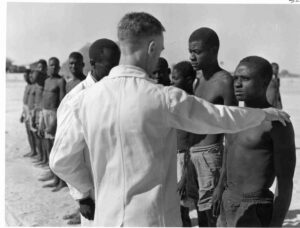By: Bernard C. Moore (Michigan State University
ORIGINALLY PUBLISHED 1 APRIL 2021 [LINK TO ORIGINAL]
As a history lecturer, I always instruct my students to dig deeper into the complex foundations of our society; if somethings seems unusual or out of place, don’t ignore it or dismiss it as an outlier. Pull on that thread, as it may help you re-stitch a new, more accurate and more complete historical study. On the surface, my own research could come across as something standard and boring – the economic history of agriculture in southern Namibia – and if I didn’t pull these unusual threads, it certainly would be. This three part study is a story of the implications of exploring unusual outliers in the research process.
Karakul and Labour Woes
Conducting historical research at the National Archives of Namibia (NAN) means reading countless documents and reports from the colonial/apartheid period in order to understand how we got to where we are today, and potentially how to fix the problems caused by this troubling history. In researching the history of agriculture in the south, much of my reading is concerned with the karakul sheep industry, dominant in the region from the 1940s-1980s. Virtually every white commercial farmer in the south farmed with karakul, which was well-accustomed to the dry climate and produced valuable Swakara pelts.
Under colonial legislation, it was very difficult for non-white Namibians to participate in the industry, for they were not permitted to receive loans and subsidies from the government to purchase the expensive karakul stud rams. These benefits were only for whites, meaning that most black Namibians were relegated to farm labour for the whites as shepherds, shearers, or general farm workers. Up through the 1960s, if a Nama man in the south did not own a large amount of sheep or cattle in the communal areas, he had to work on a white farm; failure to comply meant being declared a ‘vagrant’ and facing criminal charges. But wages on the farms were very low, and corporal punishment was a regular experience, so large numbers of Nama workers took their chances with the law, deserting abusive employers and returning to the communal areas.
This actually caused some intense labour shortages during this era, as white farmers struggled to find a sufficient number of workers. Ultimately, the problem was one of wages and working conditions. From my consultation of ledger books and financial statements during these years, it’s clear that the white farmers could have more than doubled the salary and still made immense profits. With that being said, the farmers were not able to compete with South West Africa’s growing mining sector, which was consistently able to offer better wages, rations, and housing.
White farmers therefore supplemented their workforce by hiring contract labourers from northern Namibia via the recruiting agency SWANLA (South West Africa Native Labour Association), which contracted workers at Ondangwa and Rundu. By 1951, the year that mining overtook agriculture as the largest share of GDP, farmers were by far the largest employers of Ovambo and Kavango contract workers. But the expansion of the mining industry – and by extension increased higher-paying jobs for contract workers – worried these farmers, as they felt that their labour supply was in jeopardy.
Smuggling Shepherds
This brings us to the first of these ‘threads’ which I found at the NAN. In response to pressures from farmers to increase the supply of contract workers from the north, SWANLA’s manager J.J.E. Vlok travelled to Opuwo and Sesfontein in northern Kunene region (then called Kaoko). Based on his report sent on to Windhoek (and archived at the NAN), it’s clear that he spent very little time trying to convince OvaHimba headmen to encourage their subjects to go on contract. Rather, Vlok spent most of his time arranging for so-called ‘runners’ to cross the Kunene River into southwestern Angola to smuggle in workers from Moçâmedes district. Vlok estimated that up to 500 additional Angolans could join the SWANLA workforce annually via the trek through Kaoko with these ‘runners’, as it was illegal for SWANLA to formally recruit in Angola.

When I discovered this report, I was surprised at how much emphasis was being placed on Angolans. I knew that there were some Angolans who found their way into the SWANLA ranks, but surely it must have been nearly all men from Ovamboland and Okavango, right? Wrong… Sometimes even we historians have to learn Excel and crunch numbers; and the results were stark. I dug through all the SWANLA reports at the NAN, and it turns out that between 1926 and 1970 more than 40% of all contract workers in Namibia were Angolans, and more than 225,000 contracts were signed by Angolans over this period. Furthermore, Angolan workers were disproportionately sent to farms, rather than mines.
Here we come to our second ‘thread’. Until the 1970s, there used to be a magazine published in Windhoek called Die SWA Boer, which printed articles, advice, and editorials relating to Namibia’s agricultural sector. One of these editorials, dated 1957 and titled ‘Die Arbeidsvraagstuk op Plase’ (The Labour Dilemma on Farms), revealed that trying to increase the number of migrant contract workers was not succeeding at this stage. The author was Yorck von Schütz, a prominent karakul farmer from Maltahöhe area. He argued that not only were white farmers not increasing their wages or improving working conditions to make farm labour a desirable alternative to dangerous work on mines, but economic developments in the south of Angola were making it harder to smuggle in these labourers to work on karakul farms in southern Namibia.
Many Angolans in those years were willing to accept the poor wages and working conditions on white-owned karakul farms because the alternatives in Angola were much worse. The Portuguese regularly employed pseudo-slave-labour tactics to force people to work on road building schemes and on plantation estates. But by the early 1950s, things were changing. The Portuguese phased out their forced labour schemes and began investing heavily into mining, industry, and commercial agriculture in Moçâmedes, Huíla, and Cunene provinces, providing new alternatives instead of migrating to Namibia. Von Schütz argued that the economic fate of Namibia’s karakul industry would not be decided by developments in South Africa, but rather Angola.
Next week, we will continue this investigation by examining the third ‘thread’ located at the NAN, documentation relating to the establishment of Angola’s own karakul sheep industry.
PART TWO AVAILABLE AT THE FOLLOWING [LINK].
